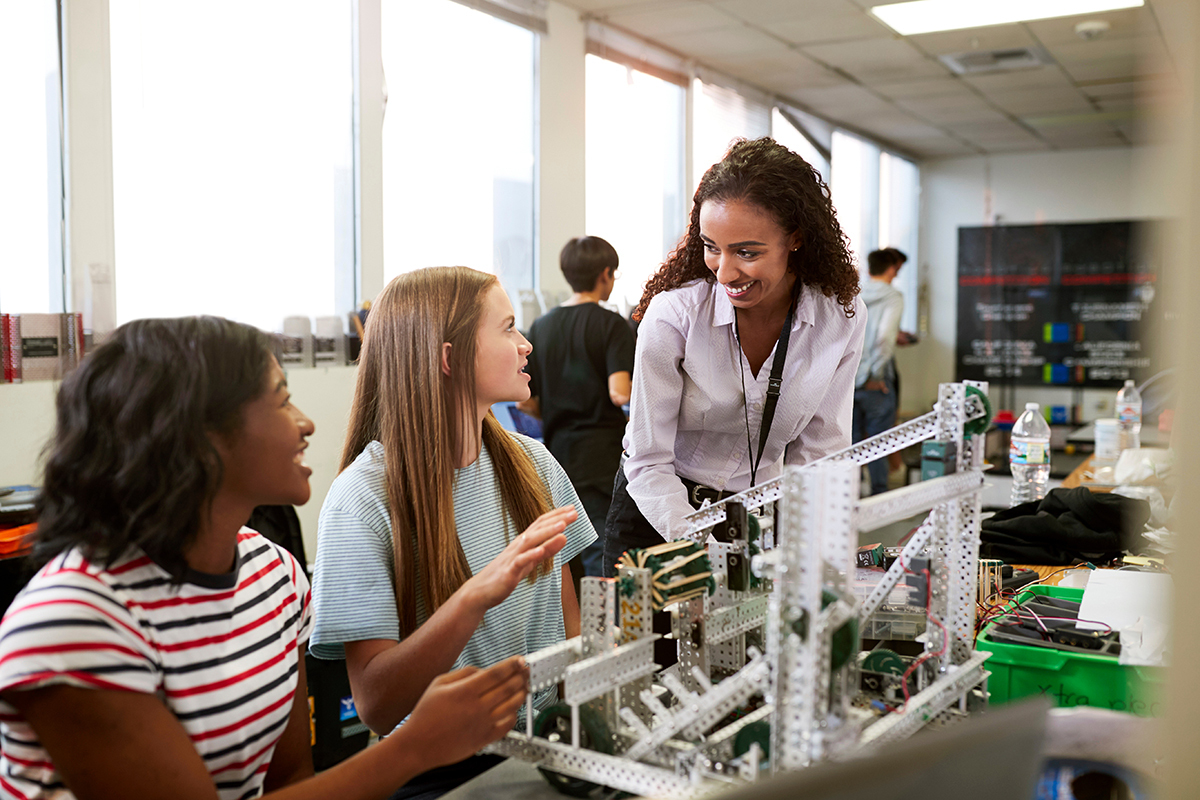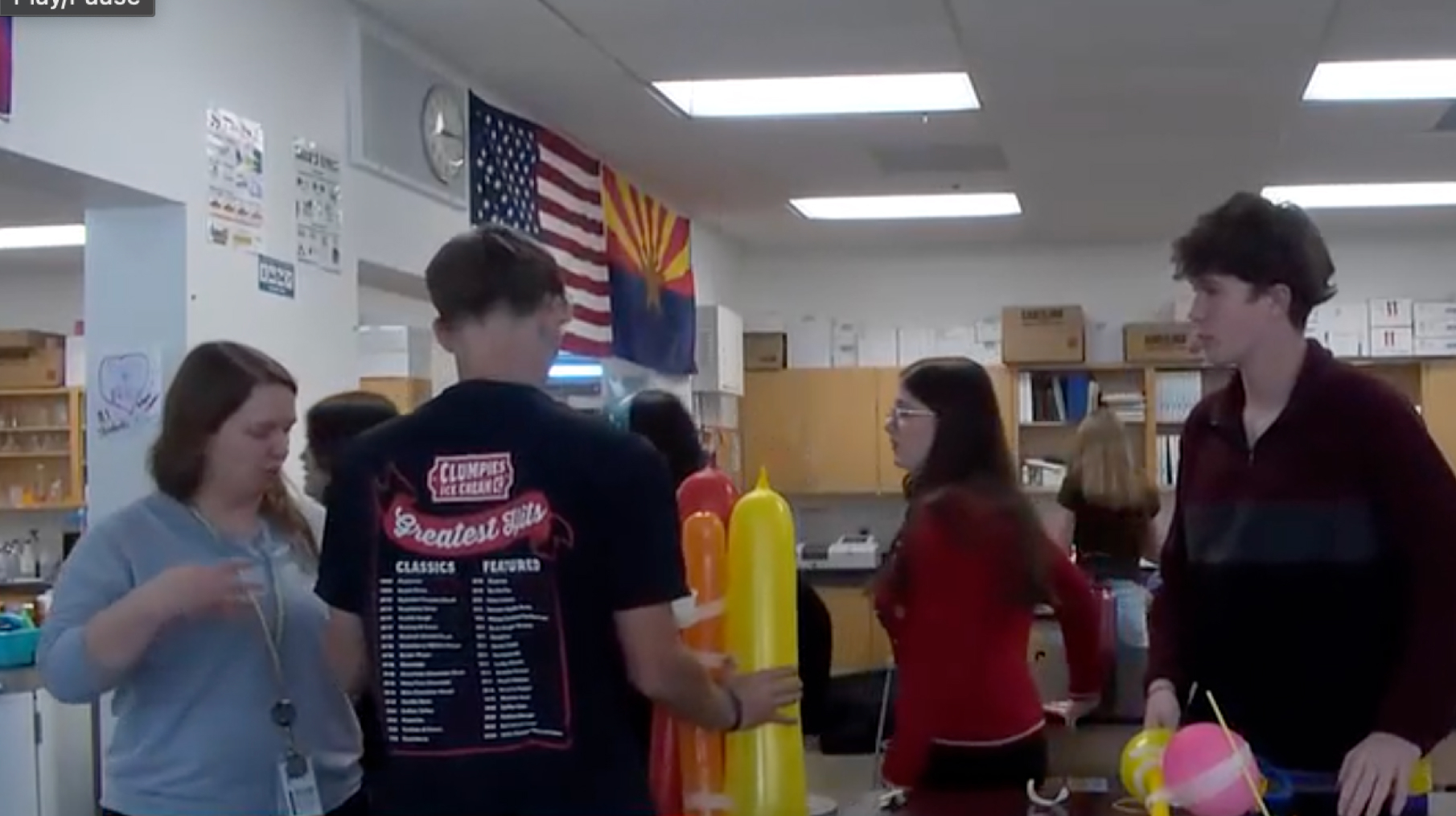Jobs in STEM fields are expected to grow twice as fast as those in non-STEM fields by 2029, and millions of those jobs are expected to go unfilled in the near future, according to the U.S. Bureau of Labor Statistics.
To help spark students’ interest in those fields, educators provide hands-on learning experiences and bring in professionals to talk to students about their careers. But often, resources are hard to come by. Schools are not flush with funding, and teachers don’t always have the connections they need to bring in professionals.
In an interview with Education Week, two teachers talked about how they use free resources from Engineering Tomorrow, a national nonprofit that aims to increase awareness and exploration of engineering, to engage their students in STEM skills.
These interviews have been edited for brevity and clarity.
Why do teachers need engineering resources beyond what is available from their schools?

Carlson: I know in the Next Generation Science Standards there’s information about engineering, but engineering is not my background at all. I am from a pure chemist background. I’ve tried to do design challenges here and there, but I’ve never felt competent in my engineering lessons. To have an organization that has pre-made labs and lessons for you that are really focused on the engineering design process, I thought that was really exciting and something that would be amazing to bring to my students. A lot of them come from backgrounds that would be underrepresented in STEM, so to expose them to engineering in high school and give them a formative experience, that maybe this is something they want to explore in the future and help them feel confident in that field, I was really excited about that opportunity.
What were your classes like before you had these additional hands-on materials?

Henriques: We were rarely getting engineers in. When [my class] looked at engineering fields, it was mostly students looking up the ABET-approved engineering programs—the organization that accredits engineering programs—seeing what’s out there, and then doing the research and getting in touch with college alumni and learning about the field that way. It was a lot of work, not necessarily structured. With Engineering Tomorrow, somebody can speak to them. We don’t have to have kids get rejected when they’re trying to talk to an engineer or even college students.
How do you incorporate hands-on lessons into your class?
Carlson: A couple of weeks into the school year we did our first engineering design challenge. We did the water treatment lab [which teaches students the science behind water filtration and purification], which is a really nice one to kind of ease into it because it’s material that I sort of knew. It’s not too complicated of a build for the students. It was a cool way for them to get lab experience because sometimes at the start of the school year, it’s hard to give students a real concrete lab experience because they haven’t learned the concepts that build up to those lab experiences yet. That was exciting for them to do something with their hands and with their group members and feel accomplished that early on in the school year.
How do students feel about the labs?
Henriques: During remote learning, having [Engineering Tomorrow] materials distributed was great. Students were able to be a part of the labs virtually and still gain an interest. Some of those students, now that they’re back, have been like ‘that saved me during COVID.’ ‘That prevented me from going too crazy.’ ‘Now I have some things that I’m interested in. I know kind of where to tailor my education.’ And that was the big one for me. It doesn’t really do it justice describing it, but if you could see it, you could tell that it was very important.
Carlson: They love having access to these materials. We can finesse some stuff here, we can spend small amounts of money on lab materials and lab kits, but for them to have real solar panels and LEDs and fans and generators, they’re amazed and excited to get their hands on this stuff. It’s a break from the hardcore chemistry concepts, the abstract world of chemistry, and it’s a chance to apply this abstract stuff that they’ve learned into something that they could actually see themselves doing. They like talking to college mentors and real engineers. It’s helped with that identity piece, to see students who are studying engineering but don’t seem all that different from them.
Are students now inspired to become engineers?
Carlson: When I first introduced the engineering process to them, I asked them if they could ever see themselves being an engineer and a lot of kids were like ‘I don’t even know what an engineer does.’ Now I think kids have a concrete idea of what an engineer does, and they’ve talked to real engineers and heard about their day-to-day lives. Now kids have an idea that this pathway is available to them. I’ve definitely seen that identity shift in students going from just being students in a science class to feeling like real scientists, feeling like real engineers because of these labs that we’ve been doing.






